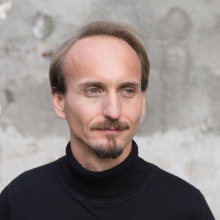Field of Work
Tenure-Track Prof. Thomas Wortmann develops computational design methods to support the development of resource- and energy efficient buildings. Such buildings can contribute to a significant reduction of greenhouse gases. His previous research focused on optimization with only one performance objective (e.g., energy efficiency, daylight quality or resource expenditure). Currently, he is researching the optimization, visualization and exploration of multi-objective design spaces and fitness landscapes. To support this exploration, Wortmann uses machine learning to quickly estimate the results of time-consuming simulations, such as computational fluid dynamics (CFD). In the future, he plans to also include prefabrication and assembly in these design spaces. The data structures and data flows that are necessary for this inclusion are another, important topic of research.

Personal Information
Thomas Wortmann, born 1981 in Erlangen, received his Diplom-Ingenieur in Architecture at the University of Kassel, where he specialized early on computational design methods. After several years as a project architect at NOX, Lars Spuybroek’s practice in Rotterdam, he deepened this specialization with a Master of Science in Design and Computation at MIT. In 2018, he received his PhD in Architecture and Sustainable Design from Singapore University of Technology and Design, a new university founded in cooperation with MIT. His PhD thesis on simulation-based optimization and interactive design space exploration received the university’s “Best Dissertation” award. Before joining the ICD at the University of Stuttgart as Tenure-Track Professor for Computing in Architecture in the Cluster of Excellence "Integrative Computational Design and Construction for Architecture", Thomas taught at National University of Singapore and held a position at Xi’an Jiaotong-Liverpool University in Suzhou, China. Among computational designers, he is known especially as the lead developer of Opossum, an award-winning, machine-learning based optimization tool that has been download over 5.000 times and is used by architects and engineers around the world.


